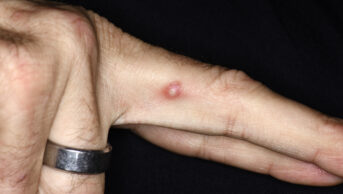Download a PDF of the full information graphic

Reported Zika virus cases from 1947–2012
Zika virus is a flavivirus related to yellow fever, dengue, West Nile and Japanese encephalitis. It is mainly transmitted by mosquitoes and was first identified in Africa over 60 years ago. Sporadic cases were reported across equatorial Africa and Asia before the first major outbreak in Yap Island, Micronesia, in 2007.
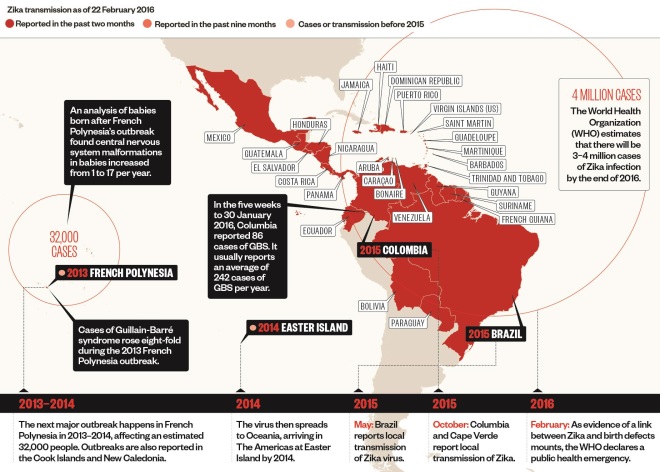
Explosion of cases: reported Zika virus cases from 2013–2016
Following outbreaks in the Pacific, the virus then spread to the Americas, where large numbers of people have become infected and possible links to microcephaly and Guillain-Barré syndrome have been identified.
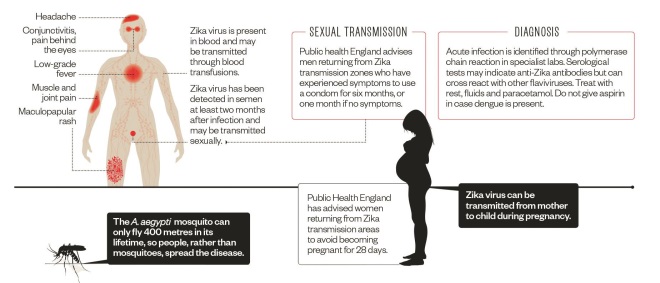
Zika virus: transmission, symptoms and diagnosis
The main route of transmission for Zika virus is through the bite of an infected mosquito, although other routes have been reported. Symptoms develop 2–10 days after infection and are usually mild, lasting up to a week. There is no specific treatment.
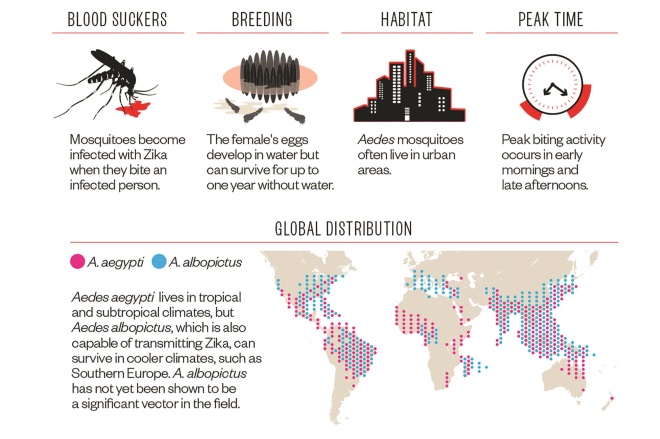
The Aedes mosquito: breeding, habitat and global distribution
The Aedes aegypti mosquito, which transmits dengue, chikungunya and yellow fever, is the main vector for Zika. The mosquito has distinctive white markings on its legs and thorax, and breeds in clean, standing water.
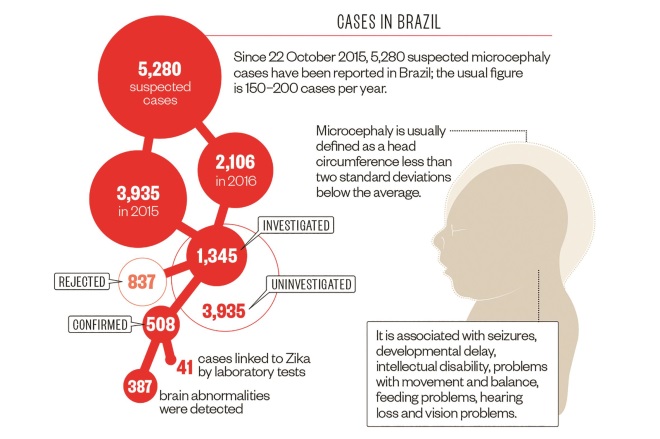
Microcephaly and link to the Zika virus
A causal link between Zika virus and microcephaly has not yet been established but evidence is mounting.
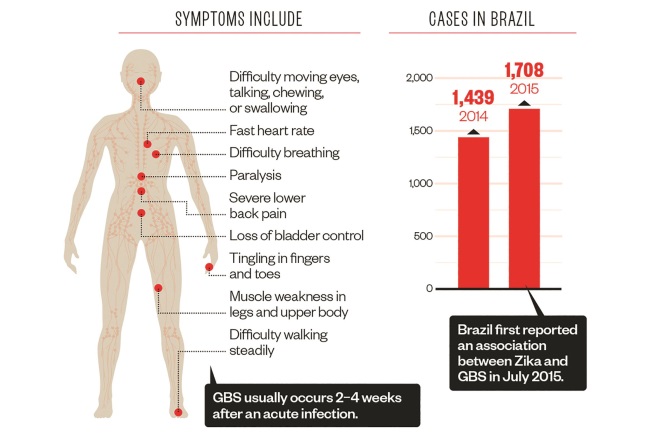
Guillain-Barré syndrome and link to the Zika virus
An increase in rare neurological condition Guillain-Barré syndrome (GBS) has been reported in Zika hit areas, but a causal link is yet to be established.

Zika virus: vaccine development
Several companies are working to develop a vaccine against Zika but a commercially available product is likely to be several years away.
References
Sources: Explosion of cases: Bulletin of the World Health Organization, New England Journal of Medicine, European Centre for Disease Prevention and Control, World Health Organization (WHO); Transmission, symptoms and diagnosis: Public Health England; WHO, The Aedes mosquito: WHO, Nature, eLife; Microcephaly: Brazil’s Ministry of Health, Centers for Disease Control and Prevention; Guillain-Barré syndrome: Centers for Disease Control and Prevention, WHO.
Infographics: Alisdair Macdonald (alisdairmacdonald.co.uk). Editorial adviser: Peter Horby, professor of emerging infectious diseases and global health, University of Oxford.


